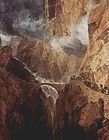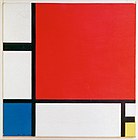Kunsthaus Zürich
 | |
 | |
| Location | Zürich, Switzerland |
|---|---|
| Director | |
| Website | http://www.kunsthaus.ch |
The Kunsthaus Zürich is an art museum in Zürich, Switzerland. After the Kunstmuseum Basel, it houses one of the most important art collections in Switzerland,[1] assembled over the years by the local art association called . The collection spans from the Middle Ages to contemporary art, with an emphasis on Swiss art.
Architecture[]
The museum was drawn-up by architects Karl Moser and Robert Curjel and opened in 1910. Particularly notable are the several preserved Moser interiors in the original section of the museum, decorated in masterful Neo-Grec version of Secession style. The bas-reliefs on the facade are by Moser's longtime collaborator Oskar Kiefer. The original museum building was extended in 1925, 1958 and 1976.[2]
A $230 million extension by London-based David Chipperfield was opened in 2020.[3] Half of the extension's budget came from the city and canton of Zurich, with the other half provided by private donors.[4] Chipperfield's design is a massive rectangular sandstone-covered building. The extension will add 5,040 sq ft (468 m2) of galleries, increasing display space by 78%. The Kunsthaus will become the largest Swiss art museum, overtaking the Kunstmuseum Basel in the available space but not the collection. The two upper floors will be for art, with facilities at ground level and a basement link under the street to the original museum across the street in Heimplatz.[2]
Lydia Escher (1858–1891), being a prominent Zürich patron of the arts, was honored by the Gesellschaft zu Fraumünster association on the occasion of her 150th anniversary by a commemorative plaque, located at the front of the building.[5] The place was baptized on 20 August 2008 by the city of Zürich as Lydia Welti-Escher Hof.[6]
Collection[]
The museum's collection includes major works by artists including Claude Monet (several works including an enormous water lily painting), Edvard Munch, Pablo Picasso, Jacques Lipchitz and the Swiss Alberto Giacometti. Other Swiss artists such as Johann Heinrich Füssli, Ferdinand Hodler or from recent times, Pipilotti Rist and Peter Fischli are also represented. Furthermore, works from Vincent van Gogh, Édouard Manet, Henri Matisse and René Magritte are to be found.
Management[]
Leadership[]
- 1909–1949: Wilhelm Wartmann
- 1950–1975: René Wehrli
- 1976–2000: Felix Baumann
- 2000–present: Christoph Becker[7]
Attendance[]
In 2013, the Kunsthaus had 315,000 visitors.[2] In a press release (dating January 12, 2017) the institution declared to have reached a record of 320'000 visitors in 2016.[8] On Wednesday admission to the Collection is free of charge for all visitors.[9]
Public transport[]
The gallery is served by a stop on the Zürich tram system, known as Kunsthaus. This is located on Pfauenplatz, between the museum building and the Schauspielhaus Zürich.
Gallery[]

Berner Nelkenmeister, Johannes der Täufer in der Wüste

J. M. William Turner, Die Teufelsbrücke St. Gotthard

Johann Heinrich Wüest, Der Rhonegletscher

Arnold Böcklin, Der Krieg

Édouard Manet, Die Flucht des Rochefort

Henri Rousseau, Am Waldrand

August Macke, Landschaft mit Kühen und Kamel

Piet Mondrian, Composition II in Red, Blue, and Yellow
Controversy[]
The planned integration of artworks ifrom the collection of the arms dealer Emil Bührle has caused discussion and criticism due to concern that some of the artworks may have been looted from Jews persecuted by Nazis during the Third Reich.[10] Critics say that the ownership history of the artworks has not been sufficiently clarified and, in January 2021, a petition was launched to demand access for impartial international researchers.[11]
See also[]
References[]
- ^ The Telegraph, The Director's Guide: Kunsthaus Zurich, by John O'Ceallaigh, June 9, 2017.
- ^ Jump up to: a b c Martin Bailey (June 20, 2014), A tale of two extensions Archived 2014-06-25 at the Wayback Machine The Art Newspaper.
- ^ Sabine von Fischer (December 2020). "Kunsthaus-Erweiterung: Kunst allein kann diese Leere füllen". NZZ.
- ^ Catherine Hickley (December 11, 2020), Kunsthaus Zurich counts down to ‘quantum leap’ for Swiss art scene after Chipperfield expansion The Art Newspaper.
- ^ "Ehrung der Kunstmäzenin Lydia Welti-Escher (press release)" (PDF) (in German). Gesellschaft zu Fraumünster. 2008-03-27. Retrieved 2014-11-29.
- ^ Stadtrat von Zürich (2008-08-20). "Strassenbenennungskommission; Benennung von "Lydia-Welti-Escher-Hof" (press release)" (in German). Stadt Zürich. Retrieved 2014-11-29.
- ^ Catherine Hickley (December 11, 2020), Kunsthaus Zurich counts down to ‘quantum leap’ for Swiss art scene after Chipperfield expansion The Art Newspaper.
- ^ Kunsthaus Press Release
- ^ http://www.kunsthaus.ch/en/information/admission-prices/collection/[dead link]
- ^ "Schwarzbuch Bührle: Raubkunst für das Kunsthaus Zürich? - The Bührle Black Book: Looted Art for the Kunsthaus Zurich?". www.lootedart.com. Retrieved 2021-01-29.
- ^ Hickley, Catherine. "An arms dealer casts a shadow over Kunsthaus Zurich". www.theartnewspaper.com. The Art Newspaper. Retrieved 2021-01-29.
External links[]
| Wikimedia Commons has media related to Kunsthaus Zürich. |
- Official site of the Kunsthaus Zürich, with information on its history and collections
- Kunsthaus Zürich at Google Cultural Institute
- Art museums and galleries in Zurich
- Altstadt (Zürich)
- Cultural property of national significance in the canton of Zürich
- Art museums established in 1910
- Buildings and structures completed in 1910
- 1910 establishments in Switzerland
- Neoclassical architecture in Switzerland








